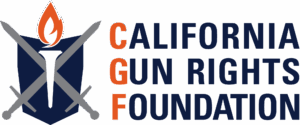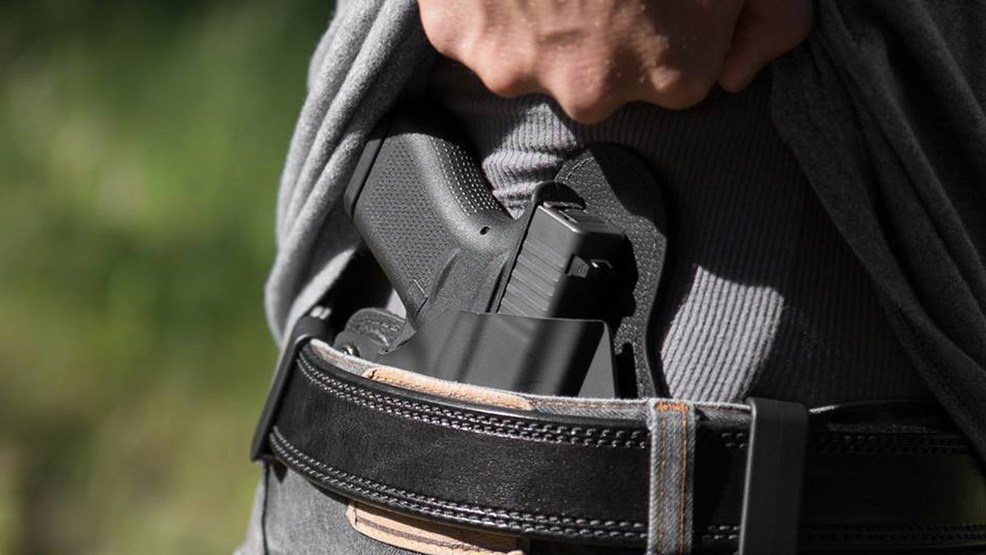State of the Law
California has one of the most, if not the most, complex and convoluted regulatory structures relating to firearms in the entire United States. The system created by the legislature has been a thorn in the side of those who must comply with the law and those who must enforce it.
After the passage of the state’s “assault weapon” laws, Sen. Don Rogers described confusion among law enforcement with the new law in a letter to Governor George Deukmejian re: Sen. Bill No. 2444 (1989-1990 Reg. Sess.) Aug. 23, 1990:
I am writing to request your signature on SB 2444 which would enable law enforcement personnel in the field the means to be able to recognize what actually is or is not an “assault weapon,” as defined under state law. . . . Unfortunately, a great many law enforcement officers who deal directly with the public are not experts in specific firearms identification. . . . There are numerous makes and models of civilian military-looking semi-automatic firearms which are not listed by California as “assault weapons” but which are very similar in external appearance. This situation sets the stage for honest law-enforcement mistakes resulting in unjustified confiscations of non-assault weapon firearms. Such mistakes, although innocently made, could easily result in unnecessary, time-consuming, and costly legal actions both for law enforcement and for the lawful firearms owners affected.
The confusion was not limited to law enforcement alone. In Rash v. Lungren (1997) 59 Cal.App.4th 1233, it became clear that Judges were equally confused. Perhaps California Appeals Court Justice William Bedsworth, writing about firearm laws, said it best:
At first blush, the statutes seem impenetrable. Reading them is hard, writing about them arduous, reading about them probably downright painful. The [complexity] makes for tough sledding. As Alfred North Whitehead wrote of rationalism, the effort is, itself, an adventure in the clarification of thought.
Even one of cinema’s greatest action heroes found the state’s plethora of firearm laws confusing. In his 2005 veto message to Senator Jack Scott, Gov. Arnold Schwarzenegger stated:
California’s laws already impose strict liability on gun owners who allow a child to access their firearm. Ensuring firearms are stored properly is an important public health goal and that is why I support the current criminal storage laws. The additional firearm storage restrictions proposed by SB 1140 are vague and unnecessary to our criminal justice system. Strict liability is the most stringent legal liability theory available and only five other states beside California currently impose such a harsh penalty. SB 1140 would further expand the liability to situations that cannot be easily defined and thereby provides no guidance to a person as to how to avoid criminal penalties. Such ambiguity in the law invites arbitrary enforcement and judicial review. Unfortunately, SB 1140 does more to confuse an already complicated area of the law than to protect children. Before a government exercises its power to take away one’s liberty, it should be clear to every person what actions will cause them to forfeit their freedom. Instead of adding to the lengthy and complex area of firearm laws, a reorganization of the current laws should be undertaken to ensure that statutes that impose criminal penalties are easily understandable.
Subsequently, in 2006, the Legislature passed the Assembly Concurrent Resolution, which described the state of the firearm laws:
Many other provisions of the Penal Code are very confusing. In particular, the laws relating to the transfers of firearms are lengthy, with numerous cross-references, highly fact-specific exemptions, and complex provisions. For example, Penal Code Section 12078 is 5,880 words long and occupies 11 pages if printed in a 12-point font with conventional margins. The section has cross-references to many scattered sections of other firearms provisions, some of them hundreds of sections away. The firearms laws occupy over 100 pages of an unannotated version of the Penal Code when printed in dual column in tiny print.
Since then, the Penal Code has been restructured, but the complexity still exists. Even more new laws regulating firearms have been added.
Today, a search of the Official California Legislative Information website of the term “firearm” reveals that there are currently sixty-eight (68) bills pending that address or affect firearms in one way or another for this legislative term alone. Most of these bills have nothing to do with the goal of safety, security, or reducing crime within the State of California.
In fact, they are just the opposite. These bills are designed and intended to harass gun owners (a favorite target for the current ruling class) and to create a new class of crime and criminals out of those individuals who have sought to collect firearms for self-defense, sporting, and other lawful uses. These bills further regulate the who, what, where, when and why of how firearms can be sold, used, possessed, transferred, displayed, and more. They are far reaching; one bill goes so far as to make illegal the possession and sale of one of the most common firearms in America.
Once passed, these bills have a tendency to spread throughout the country like a virus. The proponents of these bills create classes and groups of firearms and firearm owners to mitigate public outrage, e.g. “assault weapons,” “Saturday night specials,” “sniper rifles,” “short barrel rifles,” and “prohibited persons.” With all these laws already on the books and more coming, it is important to know the evolution of California’s gun control movement – beginning with its genesis.
California’s First Gun Control Law
Though it had only been a part of the United States for less than two years, California became the 31st state in the union (without ever even having been a territory) on September 9, 1850. Two years prior, Mexico had ceded California and much of its northern territory to the United States in the 1848 Treaty of Guadalupe Hidalgo. Signing the treaty was a decision the Mexican diplomats would soon regret. They pictured California as a region of sleepy mission towns with a tiny population of about 7,300 – not a tragic loss to the Mexican empire. Had they known that gold had been discovered at Sutter’s Mill in Coloma, California, nine days before they signed the peace treaty, they likely would have kept hold of California.
Beginning in 1849, “forty-niners” began flooding into California, chasing after the gold rumored to be strewn about the ground just waiting to be picked up. California’s population and wealth skyrocketed.
Unlike most newly acquired regions of the United States that went through long periods as territories before they had the 60,000 inhabitants needed to achieve statehood, California took the fast track. Prior to the Gold Rush, immigration to California had been so slow that it would have been decades before the population reached that number. With gold seekers pouring in at a torrential pace, more than 60,000 people came to California in 1849 alone. Congress allowed California to jump straight to full statehood without ever passing through the formal territorial stage in the Compromise of 1850.
But relations between settlers and the Native Americans were strained, to say the least. Governor Peter H. Burnett on January 7, 1851, described California’s view of the Native Americans as follows:
That a war of extermination will continue to be waged between the races, until the Indian race becomes extinct, must be expected. While we cannot anticipate this result but with painful regret, the inevitable destiny of the race is beyond the power or wisdom of man to avert.
With his powers as governor, Peter H. Burnett sought to achieve that goal of exterminating Native Americans using Article VII of the first California Constitution, which gave the governor the power “to call for the militia, to execute the laws of the State, to suppress insurrections, and repel invasions.” MilitaryMuseum.org details his actions:
In his annual address to the California Legislature on January 7, 1851, Governor Burnett highlighted significant events that transpired during 1850, including “repeated calls…upon the Executive for the aid of the militia to resist and punish the attacks of the Indians upon the frontier.” During 1850, Governor Burnett called out the militia two times. The first order was prompted by incidents at the confluence of the Gila and Colorado rivers on April 23, 1850; in response, the Governor ordered the sheriffs of San Diego and Los Angeles to organize a total of 100 men to “pursue such energetic measures to punish the Indians, bring them to terms, and protect the emigrants on their way to California.” The second instance occurred in October 1850, when Governor Burnett ordered the sheriff of El Dorado County to muster 200 men. The commanders were instructed to “proceed to punish the Indians engaged in the late attacks in the vicinity of Ringgold, and along the emigrant trail leading from Salt Lake to California.”
Thus, with the Native Americans facing “extermination” at the hands of the governor and still being able to defend themselves with firearms and ammunition purchased on the open market, the proverbial crisis that precedes most gun control measures was born. The solution was to create the first California firearm law, which regulated a class of “prohibited persons.”
In 1851, California Representative Alonzo Adams “gave notice that he would, at an early day, ask leave to introduce a bill entitled ‘an Act to prevent the sale, or furnishing Fire-arms and other implements of war to Indians.’” As with most first attempts at new gun control measures, the act was not passed.
Three years later, in 1854, the act was geographically narrowed and picked up by Representative Edward A. Stevenson, who gave notice that “he would at an early day introduce a bill for an Act to prohibit Indians from carrying fire arms or munitions of war in El Dorado county” – a more limited approach than Representative Adams took in 1851. But he too was unsuccessful, because his efforts were too narrow in scope.
Soon after Representative Stevenson introduced his bill, Representative Stephen Girard Whipple introduced Assembly Bill No. 80 (1854), “An Act to prevent the sale of fire arms and ammunition to the Indians in this State.” Note the lack of the bill’s inclusion of “munitions of war” and “implementations of war” that existed in the bill’s predecessors. By this time, there was no need for propaganda and the agenda was clear – “Indians” should not have guns or ammunition.
On March 21, 1854, Assembly Bill 80 was passed, making the sale of firearms and ammunition to “Indians” a misdemeanor. The full text of California’s first statewide gun control law, which became Penal Code section 398, is as follows:
Section 1. any person or persons who shall sell, or give, or in any way dispose of, to any Indian or Indians, of either sex, in this State, any fire-arms or ammunition of any description, shall be deemed guilty of a misdemeanor, and upon conviction thereof in any court of competent jurisdiction in this State. [sic] shall be fined in a sum not less than twenty-five dollars, nor more than five hundred dollars, or sentenced to the county jail not less than one month nor more than six months, or both such fine and imprisonment, in the discretion of the court.
Sec. 2. Of all fines so collected one-fourth shall be paid to the person informing, one-fourth shall be paid to the County Treasury for road purposes, and one-half shall be paid into the State Treasury, for Common School purposes.
Sec. 3. This Act to take effect from and after thirty days after its passage.
Penal Code section 398 remained law within the State of California for almost 60 years. On April 22, 1913, the California Legislature approved the repeal of section 398. The repeal became effective August 10, 1913.
LINK: Images of California’s First Gun Control Law
Written by civil rights and firearms law attorney Jason Davis for The Calguns Foundation.



